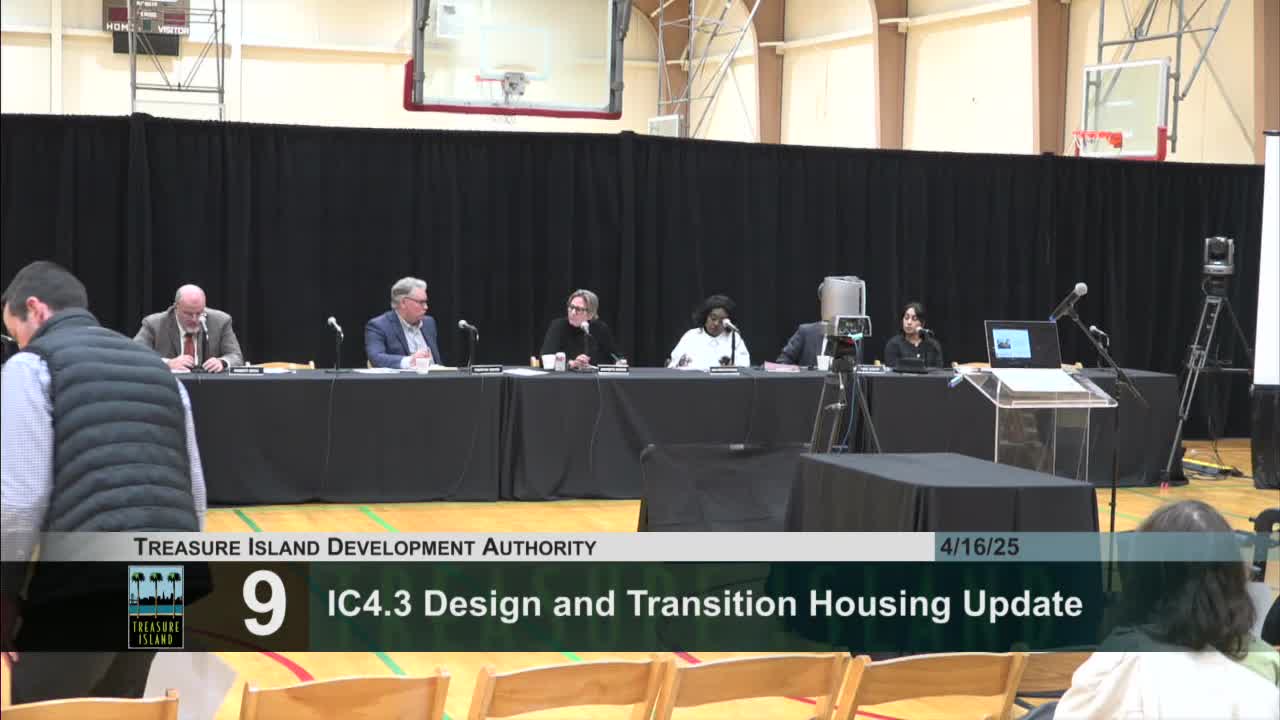Treasure Island housing project faces backlash over displacement concerns
April 16, 2025 | San Francisco City, San Francisco County, California
Thanks to Scribe from Workplace AI and Family Portal , all articles about California are free for you to enjoy throughout 2025!

This article was created by AI using a video recording of the meeting. It summarizes the key points discussed, but for full details and context, please refer to the video of the full meeting. Link to Full Meeting
One of the focal points of the discussion was the construction timeline for the next building phase on Treasure Island, specifically Stage 3, which is set to begin after the completion of the current project in 2030. This phase is part of a larger plan that aims to revitalize the area but has raised questions about the impact on existing residents, particularly those from legacy households.
Mr. Klein, a resident, expressed his worries about the displacement of individuals who do not fit neatly into the categories of legacy or new residents. He highlighted the challenges faced by those in mixed-use developments, where the ratio of low-income to higher-income households is often skewed. Klein pointed out that the current plans for Treasure Island may not adequately address the needs of lower-income families, especially given reports of issues within the new housing units, such as inadequate ventilation and pest problems.
Another resident echoed these concerns, sharing her personal struggles with fluctuating income due to health issues. She emphasized the importance of maintaining affordable housing options that do not impose strict income limits, allowing for a more inclusive community. Her plea underscored a broader issue in San Francisco: the difficulty many face in qualifying for affordable housing while also being unable to afford market rates.
The meeting also touched on the need for improved public amenities, such as restrooms and transportation options, which have become critical as more people visit the island. Officials acknowledged these concerns and committed to addressing them in future discussions.
As the meeting concluded, there was a palpable sense of urgency among attendees. The city’s leadership recognized the importance of balancing development with the needs of current residents, pledging to work collaboratively to find solutions that would benefit all members of the community. The discussions highlighted a crucial moment for Treasure Island, as the city navigates the complexities of urban development while striving to preserve the fabric of its diverse neighborhoods.
Converted from City of San Francisco - Video Open Video Only in Windows Media Player - Apr 16, 2025 meeting on April 16, 2025
Link to Full Meeting
Comments
View full meeting
This article is based on a recent meeting—watch the full video and explore the complete transcript for deeper insights into the discussion.
View full meeting